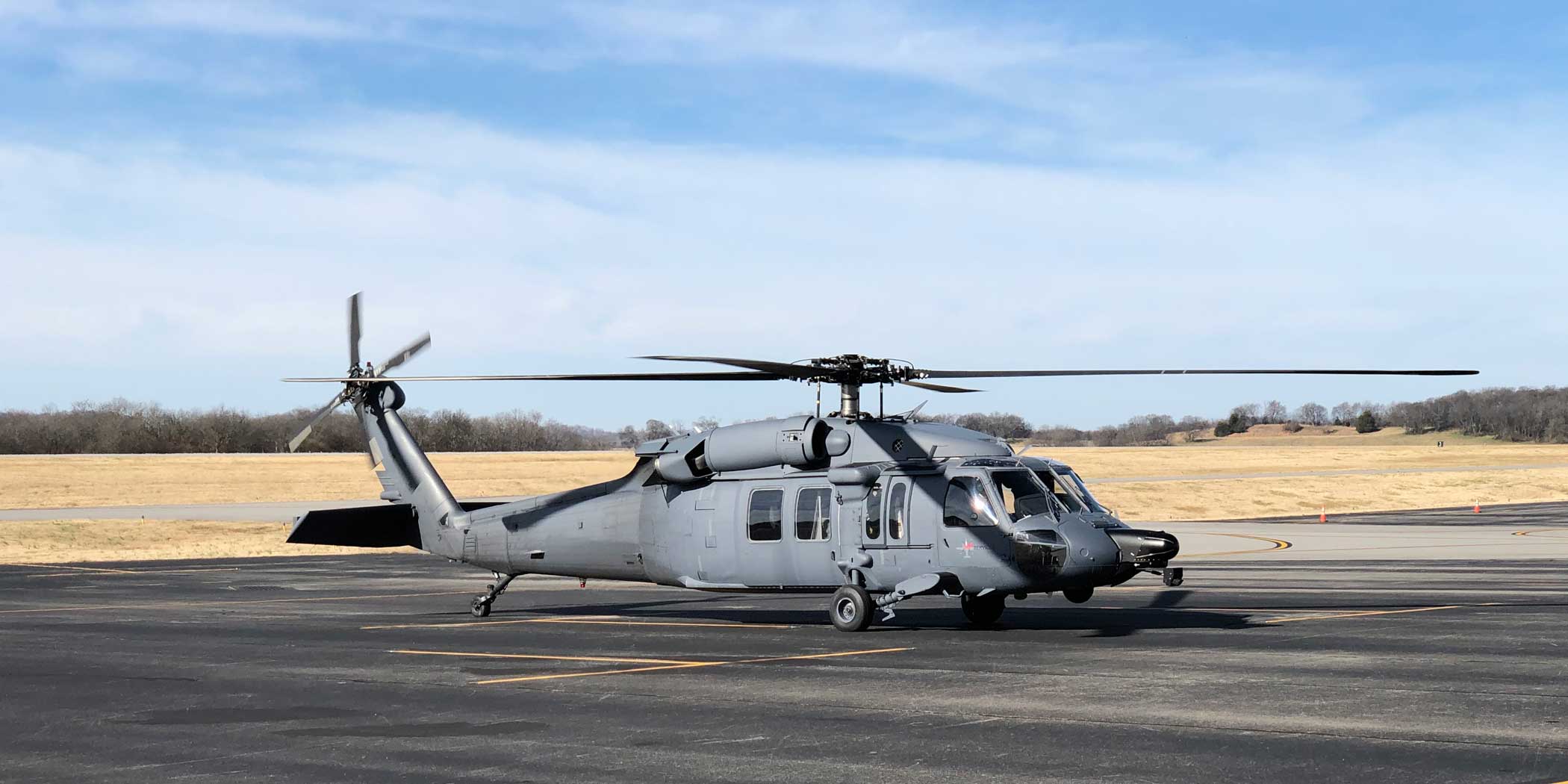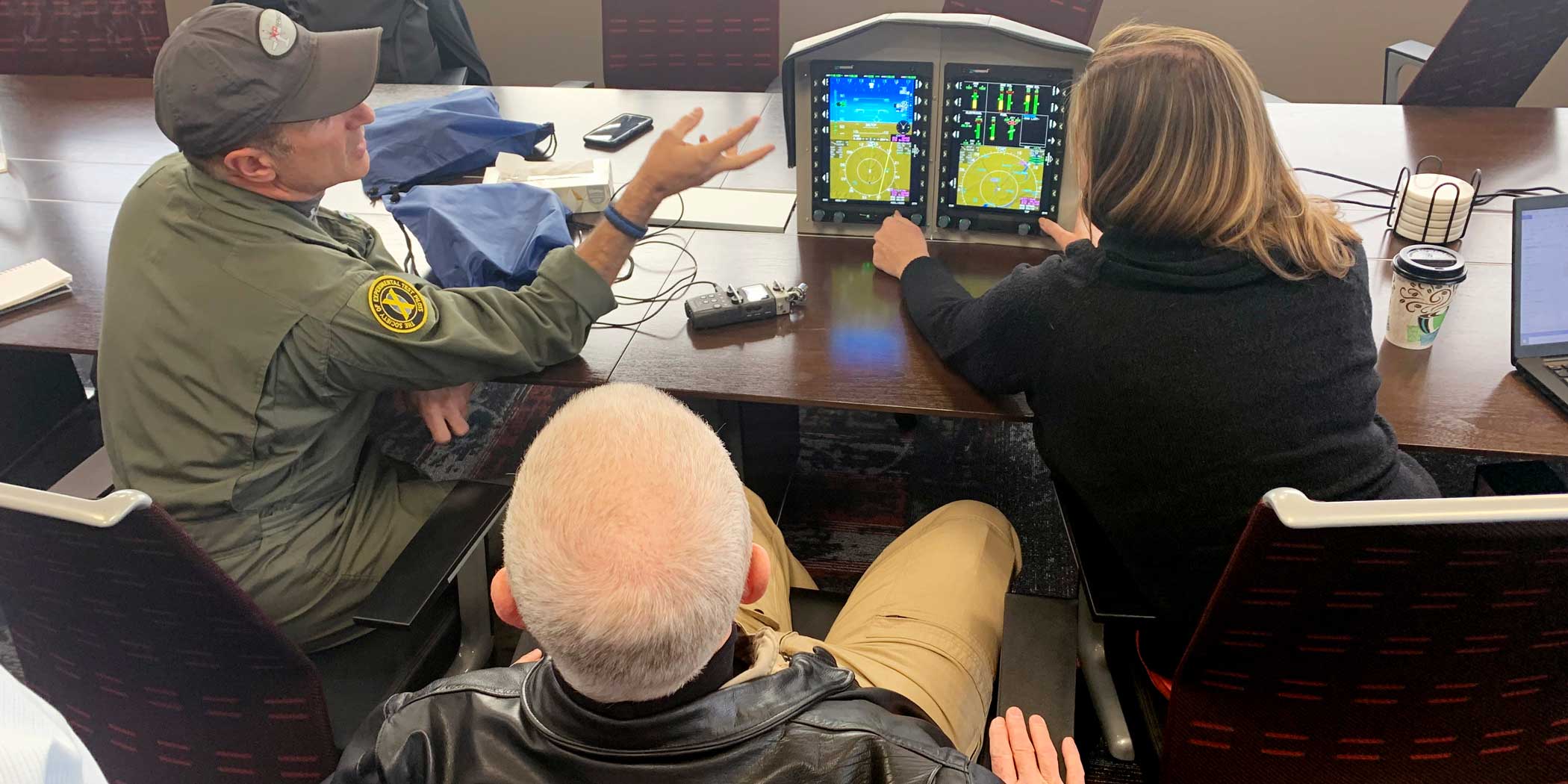Click Here to View This Page on Production Frontend
Click Here to Export Node Content
Click Here to View Printer-Friendly Version (Raw Backend)
Note: front-end display has links to styled print versions.
Content Node ID: 406292
Avionics modernization programs target older systems that are nearing obsolescence, too costly to maintain, and lacking the functionality required to fit into an ever-evolving airspace structure or mission requirements. The most successful and viable avionics upgrade programs focus on solid aircraft with many cycles remaining on the airframe and engines and performance that is in line with newer aircraft. For the operator, these upgrades can extend the life of an aircraft for decades at a fraction of the cost of buying new, more costly aircraft.
Genesys Aerosystems—a wholly-owned subsidiary of flight control manufacturer Moog—identified such an opportunity to extend the life of the versatile and dependable utility Sikorsky UH-60 Black Hawk helicopter. The Genesys cockpit upgrade replaces legacy UH-60A/L Black Hawk avionics with an FAA-certified, fully integrated IFR glass cockpit that includes dual all-digital air data/attitude heading reference system (ADAHRS), a three-axis autopilot, and other modern components that not only enhance aircraft safety and mission performance but provide a strong alternative to buying a new aircraft.
The UH-60 Black Hawk first flew more than 40 years ago and to date, more than 4,000 examples have been produced, with over 2,300 delivered to the U.S. Army. In addition to the U.S. military, Black Hawks are in service with 28 countries through foreign military sales programs. The bulk of these helicopters—531—are earlier UH-60A/L models, which are still highly capable aircraft but incorporate a largely analog avionics package that is nearing obsolescence. UH-60L Black Hawks share most systems with the original “A” models except for a more powerful engine and an improved gearbox to improve lifting capabilities. Many UH-60As have been converted to the L standard. In addition to military use, many early Black Hawks are beginning a second life as civil firefighting or utility aircraft.
The core issue with the legacy Black Hawks is mechanical gyros; each aircraft is equipped with either a set of electro-mechanical or fiber-optic gyros. These gyros are one of the primary components of the avionics system and are prone to failure and expensive to maintain. The U.S. Army has declared these gyros as obsolete and in August 2020 issued a notice that called for the mandatory replacement of these older systems. In addition to these gyros, early Black Hawks are equipped with a myriad of analog flight instruments, radios, annunciator displays, and other components that date back to the early 1980s.

In addition to a complete avionics modernization program, Genesys offers a modular building block solution for older Black Hawks. For the budget-minded, the mechanical gyros can be replaced with dual digital ADAHRS that can “drive” older flight instruments.
The most comprehensive option is the complete Black Hawk solution that essentially guts the avionics bay and transforms the instrument panel into a highly functional workspace for the flight crew. The complete system consists of four large (8- x 6-inch) IDU-680 displays, dual GPS/SBAS, dual ADAHRS, dual digital radios (navcom), a dual-channel data acquisition unit, an integrated engine and crew alerting system (EICAS) with system synoptic pages, a digital standby instrument, and an optional IFR-certified three-axis autopilot/enhanced stability augmentation system (HeliSAS).
Each IDU-680 is interchangeable and includes an integral FMS, TAWS, and TCAS with synthetic vision system (SVS). The IDU-680 displays are tested to the most stringent conditions and certified as “field-loadable software devices” capable of receiving software updates through a standard USB drive. In addition to improved reliability, improved capabilities, and reduced total system lifecycle costs, the system reduces the operating weight of the aircraft by more than 80 pounds.
The IDU-680 display is a flight and navigation instrumentation system that provides intuitive information to the pilot. Each screen is presented in portrait orientation and bisected horizontally into two functional areas, each of which is fully configurable. The functional areas of the primary and multifunction displays (PFD and MFD) can show flight instruments, moving maps, an HSI, flight planner, radio management, terrain, traffic, weather (datalink or weather radar), video feed, or engine displays. IDU-680s are controlled through bezel-mounted controls and knobs to provide tactile feedback to the pilot, important because helicopter pilots often fly with gloves. In general, for ease of use during mission-oriented operations, most menus are only one level deep.
SVS is displayed on the PFD and includes worldwide terrain (with TAWS alerts), obstacles (towers, antennas, etc.), navaids, runways, and traffic. The flight path is shown through “highway in the sky” symbology or using a flight path vector.

The Genesys avionics upgrade is night vision goggle (NVG) compatible and includes several safety features such as an integrated TAWS to prevent CFIT accidents and other tools to help a pilot combat loss of control in a degraded visual environment (DVE) or inadvertent IMC encounter, both leading causes of helicopter fatalities.
Each IDU-680 provides TAWS functionality. Terrain and obstacles are displayed on the PFD (SVS) and moving map. TAWS uses “forward-looking terrain awareness” algorithms to alert the pilot of hazards. The system also provides alerts for each of the typical ground proximity warning system modes.
To aid in pilot situational awareness during periods of a DVE—such as a whiteout or brownout condition—the IDU-680 can display a geo-referenced hover vector on either the PFD, moving map, or on an expanded hover vector page. This feature is useful during all operations near the ground. The dynamic hover vector places a “bug” or point over the ground, based on the forward velocity of the aircraft. If the aircraft slows down, the point moves towards the aircraft; if the aircraft accelerates, the point moves away. With limited forward visibility, the pilot can position that point beneath the aircraft and land.
Additionally, the stability augmentation function of HeliSAS supplements the UH-60 automatic flight control system (AFCS) with additional flight envelope protections. HeliSAS is active during all flight phases and assists the pilot by maintaining a safe and stable attitude during a DVE event or an inadvertent IMC encounter. The pilot in either case can release the cyclic control and the aircraft maintains a stable pitch and roll attitude.
Genesys Aerosystems’ avionics modernization program extends the life of these aircraft for decades, at a fraction of the cost of the more than $20-million list price for a new Sikorsky UH-60M/S-70i. The new digital avionics suite is FAA-certified and offers full IFR and NVG capabilities, plus several built-in safety features and the option to further customize displays for specific special missions.